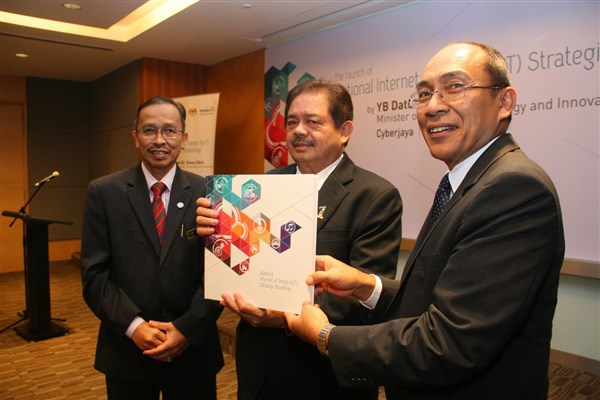In common with findings in Asia Pacific, Information Technology decision makers (ITDMs) in Malaysia believe wireless networks to be the most vulnerable element of the IT infrastructure, according to a new survey from Fortinet, a high-performance cyber security solutions. Nearly half (44%) of respondents in APAC ranked wireless networks as most exposed from a security standpoint, in contrast to just 31% for the core network.

The Fortinet Wireless Security Survey was a research exercise undertaken throughout May 2015, by market research company Lightspeed GMI. The survey was conducted online amongst 1,490 IT decision makers – predominantly CIOs, CTOs, IT Directors and Heads of IT – at organizations with more than 250 employees around the globe.
12 countries participated in the survey: Australia, Canada, China, France, Germany, India, Italy, Japan, Hong Kong, Spain, UK and USA.
The Fortinet survey also reveals that insufficient wireless security is a concern for almost all (92%) of the CIOs polled; hardly surprising given that more than one-third of the enterprise wireless networks put in place for internal employees, do not have the basic security function of authentication in place.
Other survey highlights include:
- Slightly more than half of ITDMs (56%) consider loss of sensitive corporate and/or customer data the biggest risk of operating an unsecured wireless environment.
- 73% have adopted a cloud approach to management of their wireless infrastructure and 87% trust the cloud for future wireless deployment.
- 39% of ITDMs polled provide guest access on their corporate wireless networks; 13% of these organizations do so without any controls whatsoever.
According to the survey, wireless networks are ranked as the most vulnerable IT infrastructure, with the highest proportion of ITDMs (44%) placing it in their top two. Respondents positioned wireless as significantly more vulnerable than core networking infrastructure, with just 31% of ITDMs ranking this highly. Databases (25%), applications (18%) and storage (10%) infrastructures were considered amongst the least susceptible from a security standpoint.
In addition, 34% of global ITDMs polled do not have the most basic wireless security measure of authentication in place. A significant 25% and 36% of enterprises respectively, overlook firewall and anti-virus security functions when it comes to wireless strategies.
Other security measures deemed critical to core infrastructure protection, such as Intrusion prevention systems (IPS) (deployed by 43%), application control (39%) and URL filtering (34%), play a part in even fewer wireless deployments.
When considering the future direction of their wireless security strategies, the majority of respondents said they would maintain focus on the most common security features – firewall & authentication, while demand for more security is emerging with 22% prioritizing complementary technologies – IPS, anti-virus, application control and URL filtering – to guard against the full extent of the threat landscape.
Of the ITDMs surveyed, 88% are concerned their existing wireless security is not sufficient, with CIOs reporting the highest level of concern at 92%. Despite deploying the highest level of security of all the regions surveyed, ITDMs across APAC are the most concerned about wireless security with 44% stating they are very concerned, in contrast to 30% in the Americas, and 20% in EMEA.
Globally, ITDMs reported varying confidence levels in wireless security; China tops the board with 71% ‘very concerned’, compared to just 13% in Japan.
The findings suggest that increased security awareness leads to higher levels of concern, with respondents in the top two ‘concerned’ countries – China and India – deploying more wireless security functions on average, than the two least ‘concerned’ countries – Italy and Japan.
When asked to cite the risks of operating an unsecured wireless network, 56% of APAC ITDMs considered loss of sensitive corporate and/or customer data as the biggest risk to their organization, in contrast to the Americas at 45% and EMEA 42%.
The next highest risk, industrial espionage, was cited by just 18% of ITDMs, followed by non-compliance to industry regulations (10%), damage to corporate reputation (8.2%) and service interruption (7.2%).
Wireless infrastructure governed by a premise-based controller is a thing of the past according to the findings, with on-site wireless controllers the least common form of management (27%).
This trend for cloud-based management looks set to grow further, with only 13% of enterprise ITDMs refusing to trust the cloud for such critical management in the future.
Of the cloud-ready respondents, 55% would want to use a private cloud infrastructure for wireless management and 45% would outsource to a third party managed services provider. 17% of those considering outsourcing would only do so provided it is hosted in the same country, leaving 28% happy to embrace wireless management as a public cloud service regardless of geography.
39% of ITDMs polled provide guest access on their corporate wireless networks, with 13% of these organizations doing so without any controls whatsoever.
The most common form of guest security access on corporate wireless networks is a unique and temporary username and password (43%), ahead of a shared username and password (32%).












